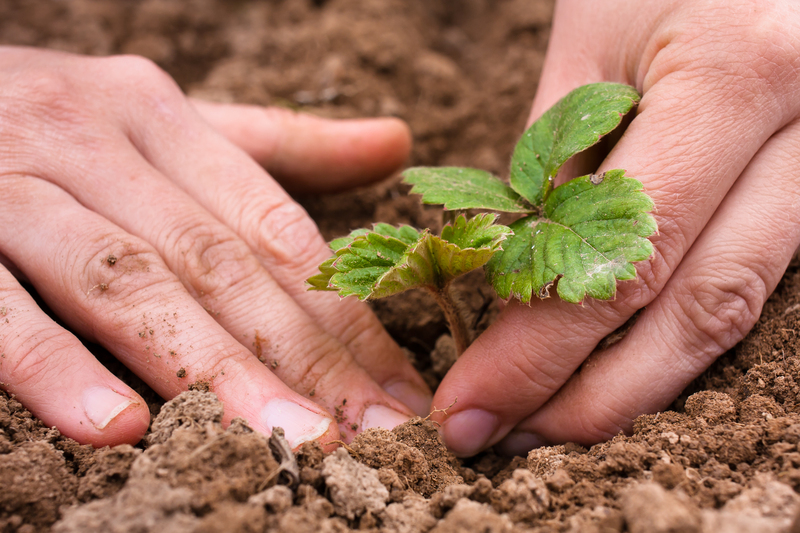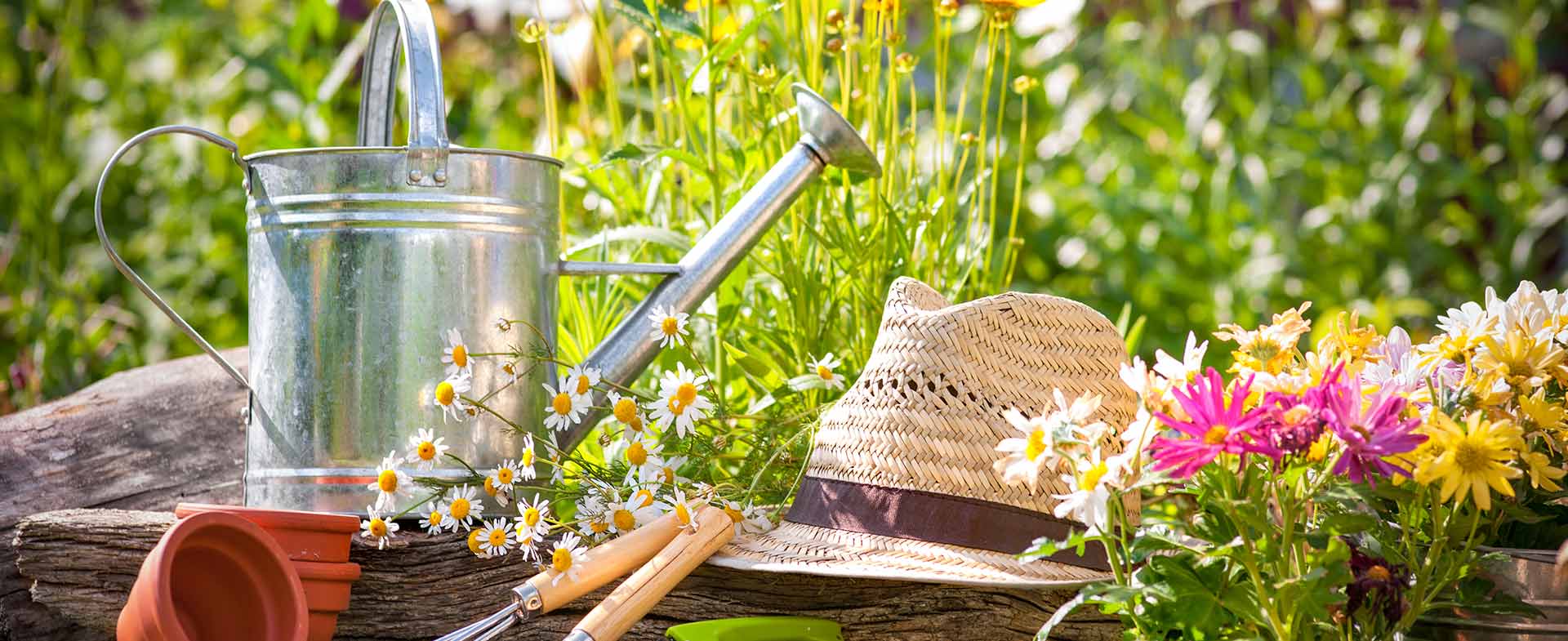Transforming Organic Waste into Lush, Nutritive Soil
Posted on 26/08/2025
Transforming Organic Waste into Lush, Nutritive Soil: A Comprehensive Guide
Organic waste is a valuable resource often overlooked in our daily lives. Instead of sending kitchen scraps and yard debris to landfills, we can harness their natural potential to create lush, fertile soil. If you are interested in environmental sustainability, gardening, or simply want to reduce your ecological footprint, understanding the process of transforming organic waste into rich soil is essential. This article dives deep into composting strategies, the science behind decomposition, and practical steps you can take to join this green revolution. Read on to discover how you can turn everyday waste into a powerful soil amendment.
What is Organic Waste?
Organic waste refers to any biodegradable material that comes from plants or animals. Common sources include:
- Fruit and vegetable scraps
- Eggshells
- Coffee grounds and filters
- Grass clippings, leaves, and yard trimmings
- Paper products (uncoated and free of synthetic additives)
When organic matter decomposes, it undergoes a natural transformation through the activity of microorganisms, resulting in a dark, crumbly material known as compost or humus. This process is the cornerstone of turning waste into lush, nutritive soil.

Why Transform Organic Waste into Soil?
There are many compelling reasons to transform organic waste into healthy soil:
- Reduces Landfill Waste: Organic matter is heavy and generates methane in landfills, a greenhouse gas far more potent than carbon dioxide.
- Improves Soil Quality: Compost enhances soil structure, moisture retention, and nutrient content, supporting more vigorous plant growth.
- Promotes Biodiversity: Healthy soils foster beneficial organisms, from earthworms to fungi, creating a balanced ecosystem.
- Saves Money: Homemade compost can replace costly chemical fertilizers and soil amendments.
- Supports Environmental Sustainability: Recycling nutrients closes the loop in the food system and promotes responsible waste management.
The Science Behind Composting: How Organic Waste Becomes Nutritive Soil
The transformation of organic waste into nutritive soil hinges on the process of decomposition. Microorganisms such as bacteria, fungi, and actinomycetes break down complex organic substances into simpler compounds, releasing nutrients that plants can absorb.
Key Stages of Composting
- Mesophilic Phase: Moderate temperature microorganisms initiate rapid breakdown of sugars and proteins.
- Thermophilic Phase: High temperatures foster heat-loving microbes that decompose fats, cellulose, and more resistant materials.
- Cooling Phase: Mesophilic organisms return to finish breaking down complex organic molecules.
- Curing Phase: Compost stabilizes and matures, allowing beneficial organisms to populate the finished soil amendment.
By managing moisture, aeration, and the carbon-to-nitrogen (C:N) ratio, you can maximize the efficiency of the composting process and ensure rich, fertile soil at the end.
How to Transform Organic Waste at Home: A Practical Composting Guide
Choosing a Composting Method
- Pile or Heap Composting: The simplest and most common approach; organic waste is stacked outdoors in a mound.
- Bin Composting: Contained composting using bins made from wood, plastic, or metal; ideal for smaller spaces and neater appearance.
- Vermicomposting: Utilizes red wiggler worms to quickly break down food scraps into high-quality worm castings.
- Bokashi Composting: An anaerobic technique using beneficial microbes; works well indoors and can handle dairy, meat, and cooked food scraps.
What Can You Compost?
For the richest, most nutritious soil, it's important to balance green materials (high in nitrogen) with brown materials (high in carbon):
- Greens (Nitrogen-rich):
- Vegetable peels and fruit scraps
- Coffee grounds
- Fresh grass clippings
- Tea leaves and bags (made from natural fibers)
- Browns (Carbon-rich):
- Dried leaves
- Straw and hay
- Shredded paper and cardboard
- Sawdust and wood chips (untreated)
Avoid composting: Meat, dairy, oily foods, diseased plants, or chemically treated materials, as they attract pests and may interfere with decomposition.
Step-by-Step Composting Process
- Choose a Site: Select a level well-drained area with some shade.
- Build Your Pile/Bin: Layer browns and greens alternately, starting with coarse material for aeration.
- Maintain Moisture: The pile should be as damp as a wrung-out sponge.
- Turn Regularly: Every 1-2 weeks, mix the pile for oxygen and even decomposition.
- Monitor Temperature: Active piles will feel warm; use a compost thermometer if available.
- Ready to Use: In 2-6 months, compost will be dark, crumbly, and smell earthy.
Troubleshooting Common Compost Problems
- Pile is too wet and smelly: Add more brown matter and turn frequently.
- Pile is too dry and slow: Mist with water and add more green material.
- Attracting pests: Avoid dairy/meat and ensure food scraps are buried in the center of the pile.
- Compost not breaking down: Chop materials smaller and increase aeration.
From Waste to Wealth: Benefits of Using Rich, Nutritive Soil
Integrating homemade compost into your garden or landscaping offers numerous advantages:
- Boosts plant health: Compost supplies plants with essential macro- and micronutrients naturally.
- Improves soil structure: Enhances both clay and sandy soils, increasing permeability and water retention.
- Reduces need for synthetic fertilizers: Saves money and minimizes chemical runoff into waterways.
- Supports beneficial organisms: Encourages earthworms, mycorrhizal fungi, and helpful microbes.
- Sequesters carbon: Compost helps trap atmospheric carbon dioxide, aiding climate change mitigation.
Advanced Composting: Expanding Your Organic Waste Transformation
Hot Composting for Faster Results
Hot composting involves close management of moisture, air, and the C:N ratio to maintain high temperatures (135-160?F/57-71?C) that quickly break down material and kill weed seeds and pathogens. This method produces usable soil in as little as 4-8 weeks but requires regular turning and monitoring.
Vermicomposting for Nutrient-Rich Castings
For those with limited outdoor space, vermicomposting is an excellent way to transform food waste indoors using special worms. The resulting castings are a potent, microbe-rich supplement for indoor plants, seed starting, and vegetable gardens.
Composting Unusual Organic Materials
- Compostable packaging: Only include certified compostable products; check for BPI or similar certification.
- Weeds or invasive plants: Only add if using hot composting, to kill seeds.
- Animal manure: Adds nutrients but ensure it is well-aged to avoid pathogens.
Urban Composting Solutions
Even in cities, it is possible to turn kitchen scraps into nutrient-rich soil. Community composting hubs, worm bins under the sink, or electric countertop composters make transforming organic waste accessible to apartment dwellers and those with small yards.
Tips for Maximizing Results: Creating the Most Lush, Nutritive Soil Possible
- Chop and Shred: Smaller pieces break down faster and more evenly.
- Maintain 60% Browns to 40% Greens: This C:N ratio supports healthy microbial activity.
- Layer Materials: Alternate browns and greens to balance nitrogen and carbon.
- Keep Covered: Use a tarp or lid to preserve moisture and deter critters.
- Dig it In: Mix finished compost directly into garden beds or use it as mulch.

Frequently Asked Questions about Composting Organic Waste
1. How long does it take to turn organic waste into usable soil?
Depending on conditions and method, effective composting can take anywhere from two months (hot composting) to one year (cold composting).
2. Can I compost in winter?
Yes! Decomposition slows in cold weather but persists. Insulate your pile with leaves or straw, and continue to add material. It will speed up again in spring.
3. Do compost bins smell?
Properly managed compost bins smell earthy, not foul. Odor issues usually stem from too much wet, green material or lack of aeration.
4. Should I turn my compost pile?
Turning is recommended for faster, more even results. It helps introduce oxygen and distributes moisture.
5. Is homemade compost safe for all plants?
Yes. Well-aged, finished compost is universally beneficial. Avoid using unfinished, raw compost near food crops.
Conclusion: Nourishing the Earth Through Organic Waste Transformation
Turning organic waste into lush, nutritive soil is more than just an eco-friendly practice; it's a vital way to give back to our planet. Whether through home composting, community programs, or innovative urban solutions, every person can contribute to this sustainable cycle. By understanding the process, choosing the right composting technique, and integrating finished compost into your gardening routines, you will unlock the power of natural decomposition to boost plant health, enhance garden productivity, and combat climate change.
Ready to transform your organic waste? Start today, and experience how simple steps can turn kitchen scraps and yard trimmings into a wealth of nutritive soil that supports your garden and the greater environment for generations to come.

